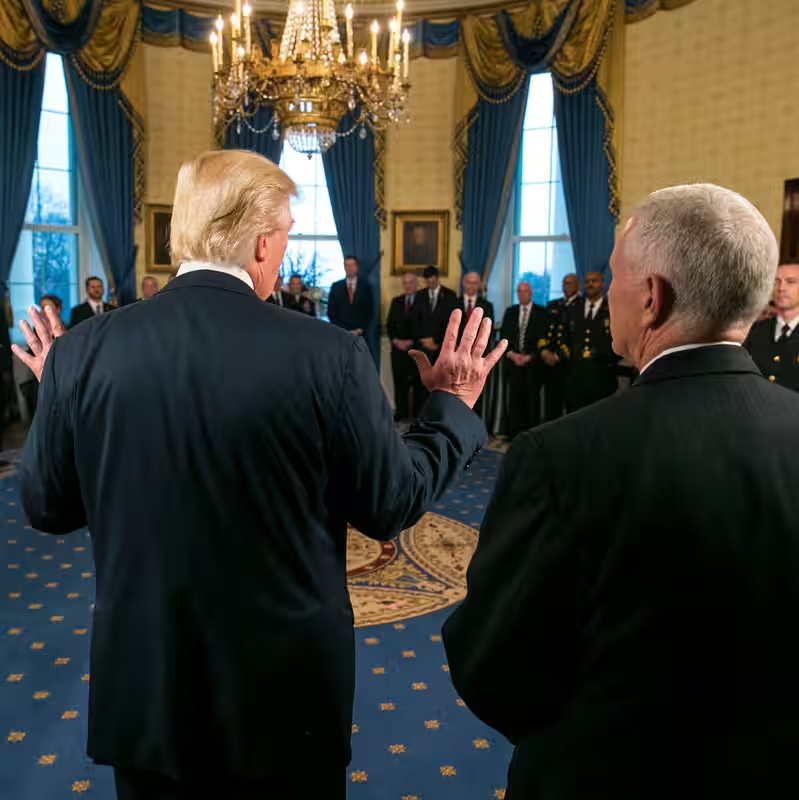The explosive conflict between Donald Trump and James Comey didn’t start with tweets, leaks, or midnight FBI raids—it began in a private Oval Office meeting just days after Trump’s inauguration. Now, as Comey faces a federal arraignment in 2025, newly surfaced details reveal how that first encounter set the stage for one of the most consequential political showdowns in modern U.S. history.
Table of Contents
- The Infamous First Meeting
- “I Hope You Can Let This Go”
- The Memos That Shook Washington
- The Firing and Its Aftermath
- Why Comey Is in Court Now
- Timeline of the Trump-Comey Conflict
- Sources
The Infamous First Meeting
On January 27, 2017, President Trump invited FBI Director James Comey to dinner at the White House—just the two of them, in the private dining room adjacent to the Oval Office. According to Comey’s later testimony and memoir, he felt uneasy from the start. “I was alone with the president of the United States—no staff, no witnesses,” he later wrote. “It was deeply concerning.”
During that dinner, Trump reportedly asked Comey for a pledge of personal loyalty—a request the FBI director found inappropriate for a law enforcement official sworn to serve the Constitution, not a political figure.
“I Hope You Can Let This Go”
The tension escalated just weeks later. In a February 14 meeting—again with no aides present—Trump allegedly told Comey, “I hope you can let this go” regarding the investigation into Michael Flynn, his national security adviser, who had misled the FBI about contacts with Russian officials.
Comey documented the conversation in a now-famous memo, which he shared with colleagues. That memo would later become central to the Department of Justice’s appointment of Special Counsel Robert Mueller—and fuel accusations that Trump obstructed justice.
The Memos That Shook Washington
Comey’s habit of writing detailed memos after every Trump interaction wasn’t just bureaucratic diligence—it was a survival tactic. “I knew I’d need a record,” he told Congress in 2017. “The president and I had very different recollections of our conversations.”
Those memos, later leaked to the press, painted a picture of a president attempting to influence an ongoing criminal investigation—a claim Trump has always denied, calling Comey a “leaker” and “liar.”
The Firing and Its Aftermath
On May 9, 2017, Trump abruptly fired Comey, citing his handling of the Hillary Clinton email investigation. But in a televised interview days later, Trump admitted the Russia probe was on his mind: “This Russia thing is a made-up story.”
The firing triggered a political firestorm. Within days, Deputy Attorney General Rod Rosenstein appointed Mueller as special counsel. The rest—two years of investigations, indictments, and congressional hearings—became history.
Why Comey Is in Court Now
In October 2025, James Comey appeared in federal court for an arraignment related to charges stemming from the handling of classified materials—a case critics argue is politically motivated by the Trump administration’s ongoing campaign to discredit former officials.
Legal experts note the irony: the man once tasked with investigating presidential misconduct is now facing prosecution under a Justice Department led by Trump loyalists. Supporters say it’s retaliation; prosecutors insist it’s about accountability.
Timeline of the Trump-Comey Conflict
| Date | Event |
|---|---|
| Jan 27, 2017 | Trump invites Comey to private dinner; asks for loyalty |
| Feb 14, 2017 | Trump says, “I hope you can let this go” about Flynn |
| May 9, 2017 | Comey fired as FBI director |
| June 8, 2017 | Comey testifies before Senate Intelligence Committee |
| Oct 8, 2025 | Comey appears in federal court for arraignment |




